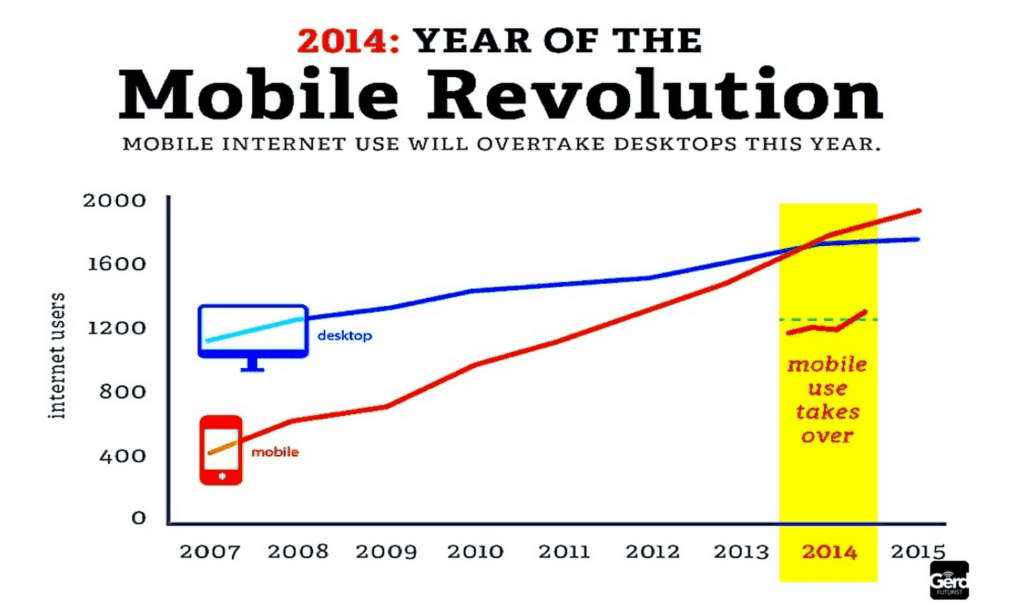2014 Was the Year of Mobile Technology–Here’s What That Means for Your Content
Mobile usage has been on the rise for the past several years, but 2014 saw a turning point. In 2014, it was confirmed that Americans now spend more time on their mobile devices than their personal computers. Whether on the bus or in-between meetings, we’re using our mobile devices more than ever before for both personal and professional use.
With the increase of mobile usage, we also saw an increase of mobile devices. Not only did that include Apple’s latest iPhone releases–which introduced us to the term “phablet”–but also wearable technology, too. A large number of smart watches went on the market this year and, though they were met with mixed reviews, their publicity and mass marketing indicates that wearable technology is on the rise. In fact, by 2018, Stuart Leung of Salesforce predicts that the wearable technology market will be worth $8.36 billion.
What does this mean for your content development?
Beyond just being mobile phone-optimized (which is so 2014), you need to future-proof your content for whatever new device will be on the market next. While we can’t say for certain what the future will hold, 2014 was a pretty strong indication that mobile technology is here to stay. Here’s five good assumptions from Inkling’s CEO, Matt MacInnis, about how to produce award-winning content in 2015 and for years to come (full article here):
1. Everyone will publish in HTML5.
HTML will adapt and evolve to meet the needs of virtually any content-centric use case. It’s safe to say that investments in robust, standards-based HTML technology and workflows today will pay ample dividends over time.
2. Structured content will win.
Publishers that invest in the know-how and technology to construct content with structure will benefit most quickly from the winning product models of tomorrow. It can be as simple as storing and grouping content in topic-relevant chunks, or as advanced as tagging evergreen content with rich metadata.
3. Everything will be in the cloud.
Publishers that invest in open web technologies based on responsive HTML will be free of the tax of proprietary systems while establishing a more direct relationship with their customers.
4. Content will be dynamic.
While obvious, this shift profoundly undermines the business model of traditional publishing. The industry’s traditional financial model assumes a fixed cost of production followed by a period of time when those costs can be recouped on the product. New product models will, by contrast, demand an ongoing investment in the same product.
5. Real-time, user-focused data will shift product development.
Publishing is one of the last holdouts against the big data revolution, but that’s changing. Data presents an opportunity to serve readers and learners with far more effective products than books could ever be.
The Bottom Line:
2014 was a big year for mobile devices, and an even bigger indication of what the future could hold. We’re excited to grow with publishers and content creators as they find new ways to adapt their content to reach readers where they’re most likely to be: on their phones and on the go.
To learn more about how Inkling can help take your content mobile, contact our sales team for a free demo.

